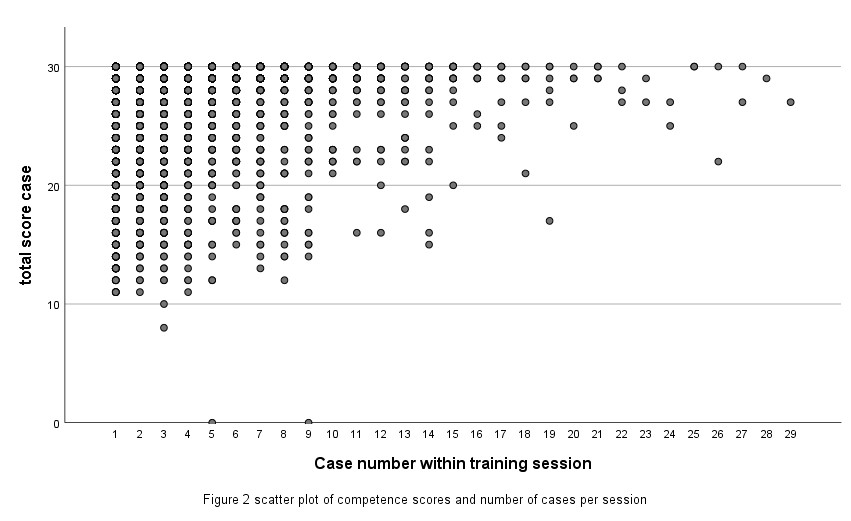Back
Neonatal/Infant Resuscitation
Category: Abstract Submission
Neonatal/Infant Resuscitation III
494 - How Much Training is Enough? Low-Dose High-Frequency Simulation Training and Maintenance of Competence in Neonatal Ventilation
Saturday, April 23, 2022
3:30 PM – 6:00 PM US MT
Poster Number: 494
Publication Number: 494.232
Publication Number: 494.232
Joanna C. Haynes, Stavanger University Hospital, Stavanger, Rogaland, Norway; Siren I. Rettedal, University of Stavanger, Stavanger, Rogaland, Norway; Anastasia Ushakova, Stavanger University Hospital, Stavanger, Rogaland, Norway; Jeffrey Perlman, Weill Cornell Medicine, New York City, NY, United States; Hege Ersdal, Stavanger University Hospital, Stavanger, Rogaland, Norway

Joanna C. Haynes, MBChB FRCA
Consultant Anaesthetist
Stavanger University Hospital
Stavanger, Rogaland, Norway
Presenting Author(s)
Background: Ventilation is the most important and challenging element of newborn resuscitation. Simulation training offers the potential to attain and maintain ventilation competence.We recently demonstrated the fidelity of a new manikin in simulating ventilation parameters and conditions encountered in real newborn ventilation.1 Less experienced healthcare workers (HCW) training with the manikin achieved the same competence as those with more experience.2
Objective: To identify the optimal simulation-training load (frequency and dose) to maintain ventilation competence for HCW with differing resuscitation experience.
Design/Methods: Prospective observational study in a teaching hospital in Norway. HCW from 6 different professions from obstetric, anesthesia and pediatric services were randomised to simulation training with the high-fidelity manikin2 twice monthly, or as desired, over 9 months. All training was logged, providing data on every simulation (case) performed in each session, and competence scores for each case. Competence scores incorporated 7 skill elements e.g. airway patency, appropriate ventilation pressure.We analysed competence scores and individual skill elements with mixed models, using number of months where training occured, number of training sessions (freqeuncy), and number of cases (dose) as predictor variables.
Results: 187 HCW performed 4348 cases. Scatter plots of competence scores according to number of sessions/month (fig 1) and number of cases/session (fig 2) suggest higher scores with greater training load.
The linear model using number of sessions showed the best prediction of competence scores, p< 0.001. Performing ≥5 sessions in 9 months predicts competence scores >28 of maximum 30 points, i.e. average ≥0.6 sessions/month.Dose (cases performed) best predicts performance of most skill elements, with ≥25 cases required to ensure correct ventilation frequency and ≥35 cases to provide ventilation within the target pressure range. For maintenance of airway patency, dose is less important; performing training in at least 2 of 9 months ensured competence.Conclusion(s): For these HCW with differing resuscitation experience, training frequency is important. Performing a mean of 0.6 or more trainings/month predicts high competence scores. Training dose is predictive of optimal performance of individual skill elements. This may offer individualized training schedules for HCWs struggling with particular skills.
References
Haynes et al. Children 2021. doi.org/10.3390/children8100940
Haynes et al. Children 2021. doi.org/10.3390/children8121115
<
Figure 1.jpg) Scatter plot of competence scores and number of training sessions per month
Scatter plot of competence scores and number of training sessions per month
Figure 2 Scatter plot of competence scores and number of cases per session
Scatter plot of competence scores and number of cases per session
Objective: To identify the optimal simulation-training load (frequency and dose) to maintain ventilation competence for HCW with differing resuscitation experience.
Design/Methods: Prospective observational study in a teaching hospital in Norway. HCW from 6 different professions from obstetric, anesthesia and pediatric services were randomised to simulation training with the high-fidelity manikin2 twice monthly, or as desired, over 9 months. All training was logged, providing data on every simulation (case) performed in each session, and competence scores for each case. Competence scores incorporated 7 skill elements e.g. airway patency, appropriate ventilation pressure.We analysed competence scores and individual skill elements with mixed models, using number of months where training occured, number of training sessions (freqeuncy), and number of cases (dose) as predictor variables.
Results: 187 HCW performed 4348 cases. Scatter plots of competence scores according to number of sessions/month (fig 1) and number of cases/session (fig 2) suggest higher scores with greater training load.
The linear model using number of sessions showed the best prediction of competence scores, p< 0.001. Performing ≥5 sessions in 9 months predicts competence scores >28 of maximum 30 points, i.e. average ≥0.6 sessions/month.Dose (cases performed) best predicts performance of most skill elements, with ≥25 cases required to ensure correct ventilation frequency and ≥35 cases to provide ventilation within the target pressure range. For maintenance of airway patency, dose is less important; performing training in at least 2 of 9 months ensured competence.Conclusion(s): For these HCW with differing resuscitation experience, training frequency is important. Performing a mean of 0.6 or more trainings/month predicts high competence scores. Training dose is predictive of optimal performance of individual skill elements. This may offer individualized training schedules for HCWs struggling with particular skills.
References
Haynes et al. Children 2021. doi.org/10.3390/children8100940
Haynes et al. Children 2021. doi.org/10.3390/children8121115
<
Figure 1
.jpg) Scatter plot of competence scores and number of training sessions per month
Scatter plot of competence scores and number of training sessions per monthFigure 2
 Scatter plot of competence scores and number of cases per session
Scatter plot of competence scores and number of cases per session